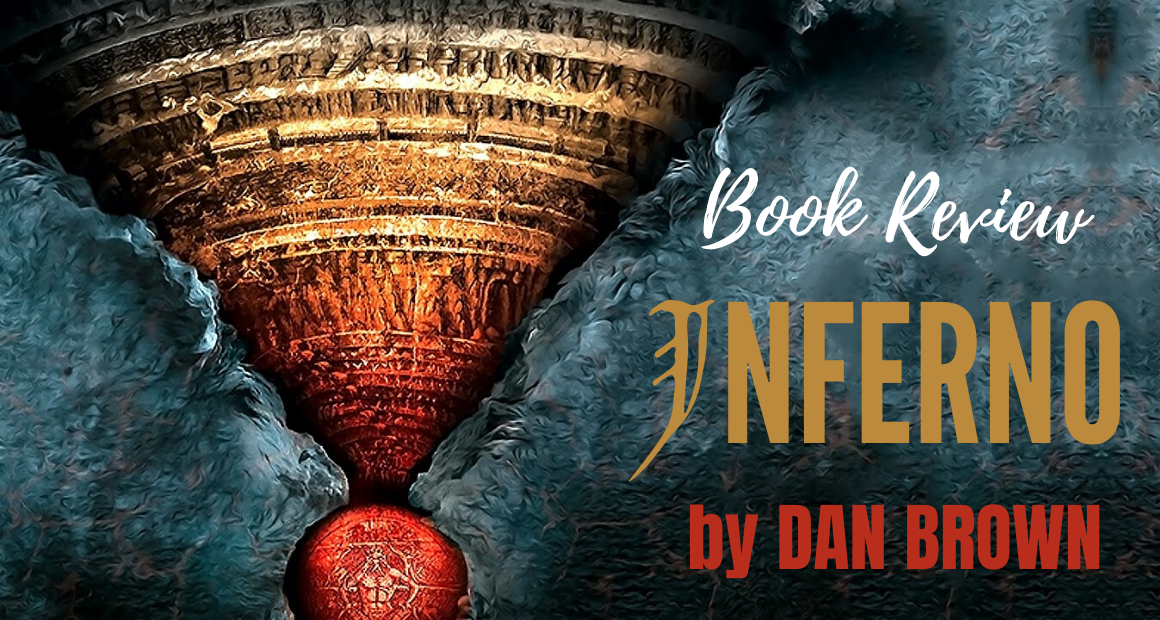Title: Inferno
Author: Dan Brown
Series: Robert Langdon: Book 4
Publisher: Doubleday
Genre: Mystery, Thriller, Historical Fiction
First Publication: 2013
Language: English
Major Characters: Robert Langdon, Bertrand Zobrist, Sienna Brooks, Elizabeth Sinskey, The Provost.
Setting Places: Istanbul (Turkey); Florence (Italy), Venice (Italy)
Narration: Third Person
Preceded by: The Lost Symbol
Followed by: Origin
Book Summary: Inferno by Dan Brown
Harvard professor of symbology Robert Langdon awakens in an Italian hospital, disoriented and with no recollection of the past thirty-six hours, including the origin of the macabre object hidden in his belongings. With a relentless female assassin trailing them through Florence, he and his resourceful doctor, Sienna Brooks, are forced to flee.
Embarking on a harrowing journey, they must unravel a series of codes, which are the work of a brilliant scientist whose obsession with the end of the world is matched only by his passion for one of the most influential masterpieces ever written, Dante Alighieri’s The Inferno.
Dan Brown has raised the bar yet again, combining classical Italian art, history, and literature with cutting-edge science in this sumptuously entertaining thriller.
Book Review: Inferno by Dan Brown
Dan Brown is without a doubt one of the best writers of action thriller mystery stories in today’s literature. A few years ago with his novel The Da Vinci Code he took the world by storm and he became one of the most famous writers in the world.
Dan Brown is often criticized that his writing is formulaic. Personally I don’t find that to be a disadvantage. Despite the fact that he uses the same formula in most of his novels, Dan Brown books are extremely enjoyable. Many great authors (such as Agatha Christie for example) use the same formula in many of their novels but they variate it in such a way that each one of their books is unique! The formula that Brown uses works great with his writing and the stories he wants to tell.
“Nothing is more creative… nor destructive… than a brilliant mind with a purpose.”
In Inferno however Dan Brown differentiates from this formula almost entirely. Robert Langdon wakes up in a hospital in Florence not knowing how he got there and having lost the last two days due to amnesia. Here’s the first change in format, Langdon is actually now the victim or catalyst for all the action to follow. He also seems to be hunted himself by two agencies and not knowing why. He escapes from hospital by the skin of his teeth with Dr Sienna Brooks in tow who narrowly escapes the assassination attempt on Langdon herself. Therefore, co-star Dr Sienna Brooks is born.
After this the action is seriously non-stop with Langdon and Brooks running for their lives and trying to piece together not only the mystery before them but also to put back the fragments of Langdon’s loss of memory.
“The decisions of our past are the architects of our present.”
Every book in the Robert Langdon series is different, and that’s what I love about these books. While they all connect back to art, they all entail different themes. Whether it’s religion, the founding fathers, or a very strange science fiction, Dan Brown makes it interesting and believable. And when you think you know the answer, the truth is you know absolutely nothing.
In Inferno, Dan Brown takes us on his version of Dante’s Inferno, the first of three poems in The Divine Comedy. The argument is you have to go through hell before you get to heaven. In Brown’s work, the “hell” humanity has to go through is another plague to knock out a chunk of the population, while heaven or paradise would be a world without depleting resources. Robert Langdon, art professor at Harvard, is recruited to help unfold the clues the bioterrorist leaves behind to uncover what is in store.
“The human mind has a primitive ego defense mechanism that negates all realities that produce too much stress for the brain to handle. It’s called Denial.”
One of the best parts of Inferno by Dan Brown is trying to figure out who is who and what is actually going on. Because Langdon wakes up with zero recollection of how he ended up in a hospital in Italy, the reader is also piecing together the whole story. I think trying to figure everything out is a great piece of Dan Brown’s works. I like being able to look up the corresponding artwork, and really enjoyed my glimpse into Dante’s Inferno.
Inferno by Dan Brown again is not based around the interpretation of symbols in the traditional sense, but has to do with finding the clues based around Dante’s Divine Comedy and all the inspired works of art that were derived from this literary classic. Also dovetailing in the life of Dante and several other important historical figures, made for a gripping and very intriguing treasure hunt. I always like the why Dan Brown combines fact with fiction, whilst incorporating a backdrop of modern science and technology.
All the works of art, places and people are all based on fact. Places and people you can immediately google to find out more and see immediately the places being described. This I feel is Dan Brown’s trademark, combining fact and fiction.





